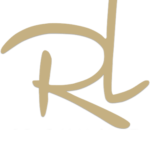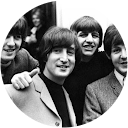Spider Vein Treatment
What is spider vein treatment? Varicose veins are twisted, enlarged veins. While superficial veins may become varicosed, the veins most commonly affected are in your legs. This occurs because standing and walking upright increases the pressure in the veins of your lower body. For many people, varicose veins and spider veins (a common, mild variation of varicose veins) are simply a cosmetic concern while others experience aching pain and discomfort from varicose veins.
Find out how the Beach-Bunionectomy ™ can correct your painful unsightly bunion.
This innovative procedure performed by Dr. Ray Lopez can correct your bunion with a simple and quick minimally invasive approach.
Signs and Symptoms Varicose veins may not cause any pain. Signs you may have varicose veins include:
- Veins that are dark purple or blue in color
- Veins that appear twisted and bulging like cords on your legs
When painful signs and symptoms occur, they may include:
- An achy or heavy feeling in your legs
- Burning, throbbing, muscle cramping and swelling in your lower legs
- Worsened pain after sitting or standing for a long time
- Itching around one or more of your veins
- Skin discoloration around a varicose vein
Spider veins are similar to varicose veins, but smaller in size. Spider veins are found closer to the skin’s surface and are often red or blue. Spider veins occur on the legs, but can also be found on the face. They vary in size and often look like a spider’s web.
Causes: Weak or damaged calves can lead to varicose veins. Since arteries are responsible for circulating blood to the rest of the body, especially against the force of gravity, they are constantly pumping at full force. Tiny valves in your veins open as blood flows toward your heart then close to stop blood from flowing backward. If these valves are weak or damaged, blood can flow backward and pool in the vein, causing the veins to distort in the form of stretching or twisting.
Diagnosis and Treatment: To diagnose varicose veins, your doctor will do a physical exam, including looking at your legs while you’re standing to check for swelling. Your doctor may also ask you to describe any pain and aching in your legs. You also may need an ultrasound test to see if the valves in your veins are functioning normally or if there’s any evidence of a blood clot. In this noninvasive test, a technician runs a small hand-held device (transducer), about the size of a bar of soap, against your skin over the area of your body being examined. The transducer transmits images of the veins in your legs to a monitor, so a technician and your doctor can see them.
Treatment
Fortunately, treatment usually doesn’t involve a hospital stay or a strenuous recovery. Less invasive procedures have opened opportunities for varicose veins to be treated on an outpatient basis.
Compression stockings: Wearing compression stockings all day is often the first approach to try before moving on to other treatments. They steadily squeeze your legs, helping veins and leg muscles move blood more efficiently. The amount of compression varies by type and brand.
If you don’t respond to self-care or compression stockings, or if your condition is more severe, your doctor may suggest one of these varicose vein treatments:
- Sclerotherapy:In this procedure, varicose veins are injected with a solution or foam that scars and closes those veins. In a few weeks, treated varicose veins should fade. Although the same vein may need to be injected more than once, sclerotherapy is effective and safe as it doesn’t require anesthesia.
- Foam sclerotherapy of large veins:Injection of a large vein with a foam solution is also a possible treatment to close a vein and seal it.
- Laser treatment: A laser is utilized to close off smaller varicose veins and spider veins. Laser treatment works by sending strong bursts of light onto the vein, which makes the vein slowly fade and disappear. No incisions or needles are used.
- Catheter-assisted procedures using radiofrequency or laser energy:These treatments involve inserting a catheter with a heated tip into an enlarged vein by using either radiofrequency or laser energy. As the catheter is pulled out, the heat destroys the vein by causing it to collapse and seal shut. This treatment is optimal for larger varicose veins.
- High ligation and vein stripping:This procedure involves tying off a vein before it joins a deep vein and removing the vein through small incisions. The vein won’t adversely affect circulation in your leg because veins deeper in the leg will handle the larger volumes of blood.
- Ambulatory phlebectomy: For this procedure, smaller varicose veins are removed through a series of tiny skin punctures. There is no need for anesthesia as only the parts of your leg that are being pricked are numbed, with minimal instances of scarring.
- Endoscopic vein surgery:This operation is only necessary in an advanced cases involving leg ulcers if other techniques fail. By using a thin video camera inserted in your leg, the surgeon can visualize and close varicose veins and then removes the veins through small incisions.
Recovery: The results of laser treatment for spider veins are not immediate. After laser therapy the vessels underneath the skin will gradually change from a dark blue to light red color then eventually disappear in two to six weeks.
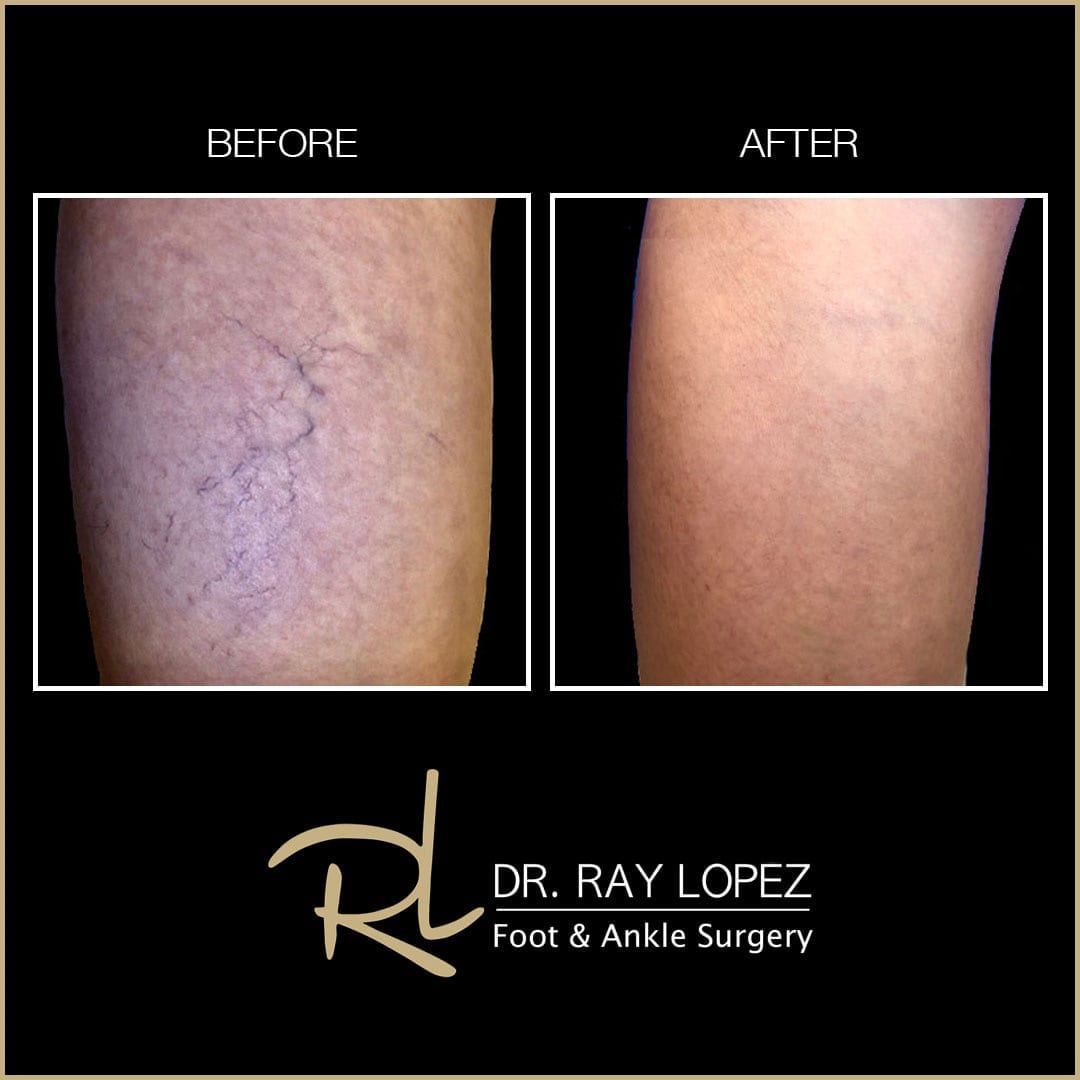
Dr. Ray Lopez
Minimally Invasive Bunion Surgery
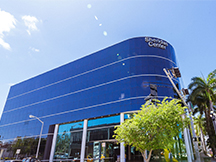
- Main Office:
- Miami Beach 400 Arthur
- Godfrey Road Suite #412
- Miami Beach, FL 33140
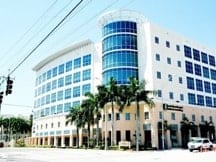
- South Miami
- 6200 Sunset Drive Suite #402
- South Miami, FL 33143

- Pembroke Pines
- 601 N. Flamingo Road
- Suite #101, Pembroke Pines, FL 33028

- Aventura
- 21000 NE 28th Ave.
- Suite #203, Aventura, FL 33180
